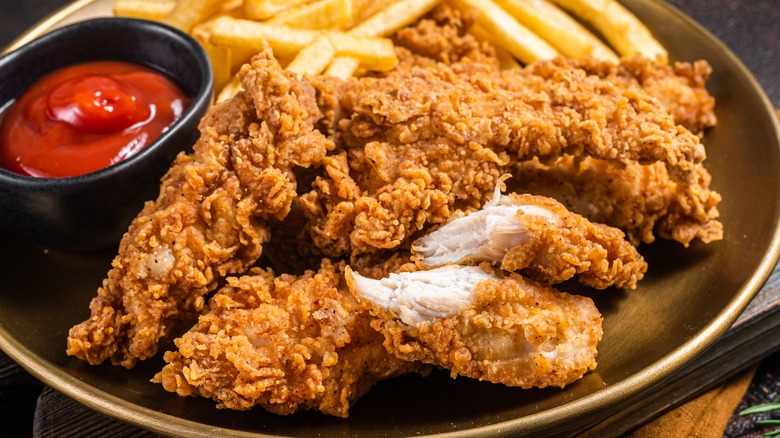The Cut Of Meat Used To Make Chicken Tenders
When many people think of chicken tenders, they often associate it nearly synonymously with chicken fingers or chicken strips — the thin, fried pieces of chicken you get as an appetizer, or the grown-up upgrade from chicken nuggets. But you might be surprised to know that an actual chicken tender isn't just a dressed-up term for fried strips of chicken meat. It's actually a unique cut of white meat that comes from a specific part of the chicken, just like a drumstick or wing.
Chicken tender is actually short for chicken tenderloin. So those thin strips of chicken are the poultry equivalent to the extra flavorful, tender cuts of meat from pigs or cows known as pork tenderloin or filet. These are considered some of the leanest, best cuts of meat on a livestock animal, and the chicken versions are similar — though the price of chicken tenders is nowhere near as premium as it is for their pork or beef counterparts.
What is a chicken tenderloin?
So where does the tenderloin cut come from on a bird? Unlike the tenderloins of cows or pigs, which come from along the back or shoulder, the chicken tenderloin is actually an extension of the breast. The tenderloin is a thin piece of muscle attached to the underside of the breast meat along the breast bone. While the taste of these two cuts of meat is very, very similar, tenderloin is, like in other animals, more tender. It is also slightly higher in sodium and calories than breast meat, which makes it slightly more flavorful. When chicken is processed, this slice of meat is often removed from the breast to be sold separately.
As a smaller piece of meat, chicken tenders are often cooked differently from chicken breasts because their size makes them easier to dry out and overcook. While the two cuts of meat are similar, tenders are most often baked or fried and used for smaller meals or for kids. However, you can achieve a similar effect by slicing up chicken breasts into thin strips if you can't find the less common tenderloin cuts.

